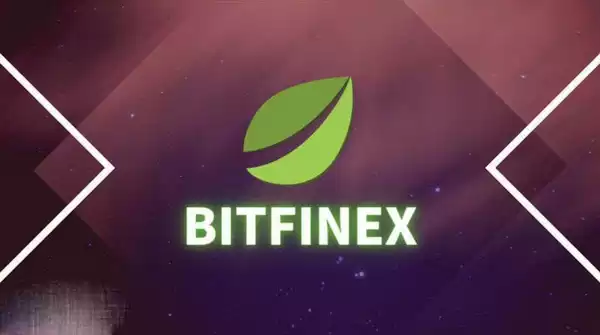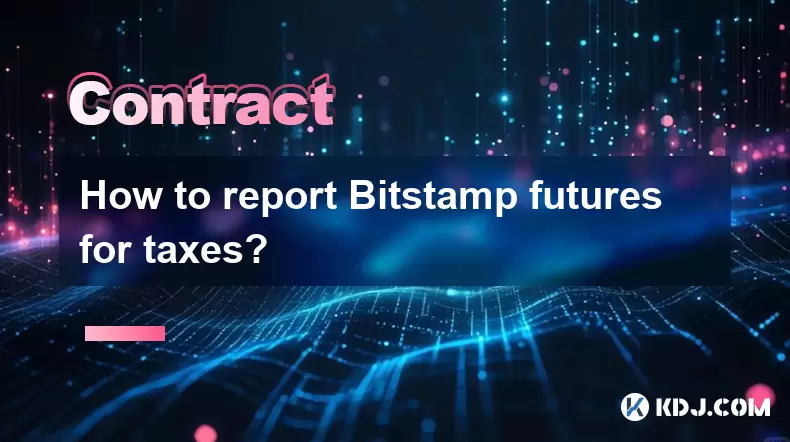-
 Bitcoin
Bitcoin $114400
0.68% -
 Ethereum
Ethereum $3550
2.48% -
 XRP
XRP $3.001
4.99% -
 Tether USDt
Tether USDt $0.9999
0.01% -
 BNB
BNB $757.6
1.46% -
 Solana
Solana $162.9
1.07% -
 USDC
USDC $0.9998
0.00% -
 TRON
TRON $0.3294
0.91% -
 Dogecoin
Dogecoin $0.2015
2.46% -
 Cardano
Cardano $0.7379
2.01% -
 Stellar
Stellar $0.4141
8.83% -
 Hyperliquid
Hyperliquid $37.83
-1.91% -
 Sui
Sui $3.454
0.76% -
 Chainlink
Chainlink $16.62
3.53% -
 Bitcoin Cash
Bitcoin Cash $554.6
2.84% -
 Hedera
Hedera $0.2486
3.91% -
 Ethena USDe
Ethena USDe $1.001
0.00% -
 Avalanche
Avalanche $21.95
3.34% -
 Toncoin
Toncoin $3.563
-2.85% -
 Litecoin
Litecoin $112.7
2.65% -
 UNUS SED LEO
UNUS SED LEO $8.977
0.13% -
 Shiba Inu
Shiba Inu $0.00001232
1.85% -
 Uniswap
Uniswap $9.319
2.93% -
 Polkadot
Polkadot $3.632
1.38% -
 Monero
Monero $307.2
2.36% -
 Dai
Dai $0.9997
-0.03% -
 Bitget Token
Bitget Token $4.340
0.91% -
 Pepe
Pepe $0.00001048
1.07% -
 Cronos
Cronos $0.1348
3.26% -
 Aave
Aave $261.5
1.93%
Bitfinex perpetual contract trading rules
Bitfinex perpetual contracts offer continuous exposure to cryptocurrency price movements, providing traders with leveraged and flexible trading options, subject to specific rules including funding payments, margin requirements, and trading fees.
Nov 09, 2024 at 11:55 am

Bitfinex Perpetual Contract Trading Rules: A Comprehensive Guide
Bitfinex, one of the world's leading cryptocurrency exchanges, offers a comprehensive suite of perpetual contract trading options. These contracts, also known as perpetual futures, allow traders to speculate on the future price movements of cryptocurrencies without the need for physical delivery. This guide provides a detailed overview of the trading rules and mechanics of Bitfinex perpetual contracts.
Understanding Perpetual Contracts
- Perpetual contracts are derivative instruments that track the real-time price of an underlying cryptocurrency but do not have a fixed expiration date. They offer continuous exposure to price fluctuations, allowing traders to maintain leveraged positions indefinitely.
- Unlike traditional futures contracts, perpetual contracts do not require physical delivery of the underlying asset at any point. Instead, traders settle price differences in cash, typically in the form of a mark-to-market adjustment every eight hours.
Bitfinex Perpetual Contract Trading Rules
Bitfinex offers perpetual contracts for a wide range of cryptocurrencies, including Bitcoin, Ethereum, and Ripple. Each contract has its own unique trading rules and specifications, which must be carefully considered before initiating trades.
1. Funding Mechanism
- Bitfinex perpetual contracts utilize a funding mechanism to ensure that the contract price remains closely aligned with the underlying cryptocurrency's spot market price.
- The funding rate is calculated every eight hours based on the difference between the contract price and the spot market price and is either paid or received by traders holding long or short positions, respectively.
- The purpose of the funding rate is to encourage traders to maintain positions that reflect the actual market sentiment, promoting price stability and liquidity.
2. Margin Requirements
- Margin requirements are the amount of collateral that traders must maintain in their accounts to open and hold positions in perpetual contracts.
- Margin requirements are typically expressed as a percentage of the contract's notional value and vary depending on the liquidity and volatility of the underlying cryptocurrency.
- By maintaining sufficient margin, traders reduce the risk of liquidations in the event of adverse price movements.
3. Liquidations
- Liquidations occur when a trader's margin falls below the minimum required level due to unfavorable price movements.
- When a liquidation occurs, Bitfinex will automatically close the trader's position at the next available market price, resulting in potential losses.
- To avoid liquidations, traders should carefully manage their positions and monitor their margin levels regularly.
4. Position Limits
- Bitfinex imposes position limits to prevent excessive market concentration and ensure fair trading conditions for all participants.
- Position limits vary depending on the cryptocurrency and contract type and are subject to change based on market conditions.
- Traders who exceed position limits may face restrictions on their trading activities or forced position reductions.
5. Trading Fees
- Bitfinex charges trading fees on all perpetual contract trades based on a tiered maker-taker fee structure.
- Maker fees are charged to traders who place orders that add liquidity to the market, while taker fees are charged to traders who remove liquidity.
- Trading fees are typically expressed as a percentage of the contract's notional value and vary depending on the trading volume.
6. Spread and Slippage
- The spread is the difference between the bid and ask prices of a perpetual contract and represents the potential trading costs.
- Slippage occurs when the executed trade price differs from the intended price due to market volatility or liquidity constraints.
- Traders should consider the impact of spread and slippage when placing orders and managing their trading strategies.
7. Order Types
- Bitfinex offers a variety of order types to accommodate different trading strategies, including market orders, limit orders, stop orders, and trailing stop orders.
- Market orders execute immediately at the current market price, while limit orders execute only when the contract price meets or exceeds a specified price.
- Stop orders trigger market orders when the contract price reaches a predetermined level, and trailing stop orders automatically move with the price to protect profits or limit losses.
8. Settlement
- Perpetual contracts do not have a fixed expiration date and can be settled at any time by closing the position.
- Settlement occurs by paying or receiving the difference between the contract's entry price and the current spot market price, adjusted for funding payments.
- Traders can monitor their realized and unrealized profits and losses in real-time through the Bitfinex trading interface.
Disclaimer:info@kdj.com
The information provided is not trading advice. kdj.com does not assume any responsibility for any investments made based on the information provided in this article. Cryptocurrencies are highly volatile and it is highly recommended that you invest with caution after thorough research!
If you believe that the content used on this website infringes your copyright, please contact us immediately (info@kdj.com) and we will delete it promptly.
- Cryptocurrency, Altcoins, and Profit Potential: Navigating the Wild West
- 2025-08-04 14:50:11
- Blue Gold & Crypto: Investing Disruption in Precious Metals
- 2025-08-04 14:30:11
- Japan, Metaplanet, and Bitcoin Acquisition: A New Era of Corporate Treasury?
- 2025-08-04 14:30:11
- Coinbase's Buy Rating & Bitcoin's Bold Future: A Canaccord Genuity Perspective
- 2025-08-04 14:50:11
- Coinbase's Buy Rating Maintained by Rosenblatt Securities: A Deep Dive
- 2025-08-04 14:55:11
- Cryptos, Strategic Choices, High Returns: Navigating the Meme Coin Mania
- 2025-08-04 14:55:11
Related knowledge

Why is my Bitstamp futures position being liquidated?
Jul 23,2025 at 11:08am
Understanding Futures Liquidation on BitstampFutures trading on Bitstamp involves borrowing funds to open leveraged positions, which amplifies both po...

How to report Bitstamp futures for taxes?
Jul 30,2025 at 08:35am
Understanding Bitstamp Futures and Taxable EventsWhen trading Bitstamp futures, it’s essential to recognize that these financial instruments are treat...

Does Bitstamp offer inverse contracts?
Jul 23,2025 at 01:28pm
Understanding Inverse Contracts in Cryptocurrency TradingIn the realm of cryptocurrency derivatives, inverse contracts are a specific type of futures ...

What is the difference between futures and perpetuals on Bitstamp?
Jul 27,2025 at 05:08am
Understanding Futures Contracts on BitstampFutures contracts on Bitstamp are financial derivatives that allow traders to speculate on the future price...

How to find your Bitstamp futures trade history?
Jul 23,2025 at 08:07am
Understanding Bitstamp and Futures Trading AvailabilityAs of the current state of Bitstamp’s service offerings, it is critical to clarify that Bitstam...

Can I use a trailing stop on Bitstamp futures?
Jul 23,2025 at 01:42pm
Understanding Trailing Stops in Cryptocurrency TradingA trailing stop is a dynamic type of stop-loss order that adjusts automatically as the price of ...

Why is my Bitstamp futures position being liquidated?
Jul 23,2025 at 11:08am
Understanding Futures Liquidation on BitstampFutures trading on Bitstamp involves borrowing funds to open leveraged positions, which amplifies both po...

How to report Bitstamp futures for taxes?
Jul 30,2025 at 08:35am
Understanding Bitstamp Futures and Taxable EventsWhen trading Bitstamp futures, it’s essential to recognize that these financial instruments are treat...

Does Bitstamp offer inverse contracts?
Jul 23,2025 at 01:28pm
Understanding Inverse Contracts in Cryptocurrency TradingIn the realm of cryptocurrency derivatives, inverse contracts are a specific type of futures ...

What is the difference between futures and perpetuals on Bitstamp?
Jul 27,2025 at 05:08am
Understanding Futures Contracts on BitstampFutures contracts on Bitstamp are financial derivatives that allow traders to speculate on the future price...

How to find your Bitstamp futures trade history?
Jul 23,2025 at 08:07am
Understanding Bitstamp and Futures Trading AvailabilityAs of the current state of Bitstamp’s service offerings, it is critical to clarify that Bitstam...

Can I use a trailing stop on Bitstamp futures?
Jul 23,2025 at 01:42pm
Understanding Trailing Stops in Cryptocurrency TradingA trailing stop is a dynamic type of stop-loss order that adjusts automatically as the price of ...
See all articles

























































































